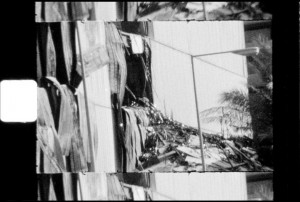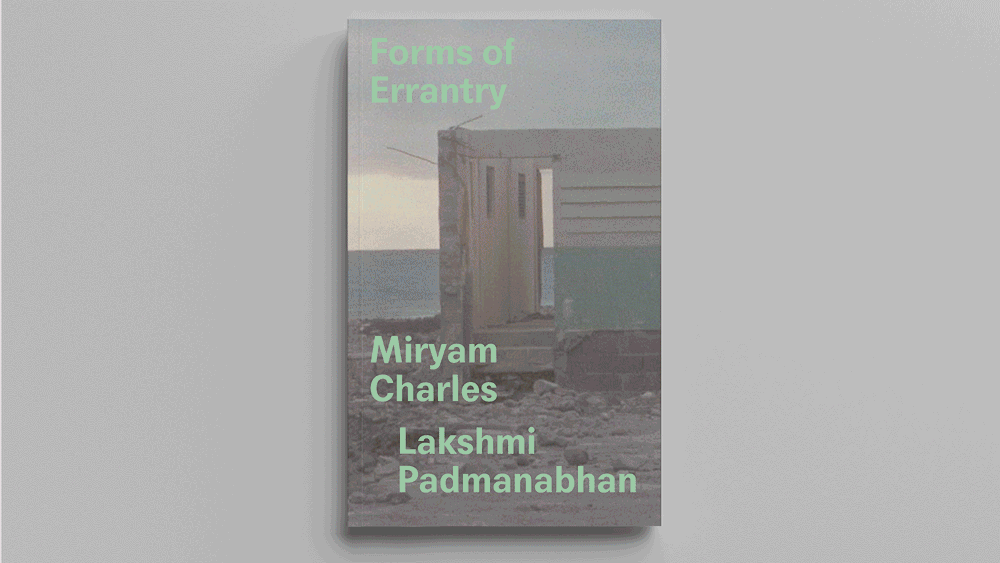The 2010 Orphan Film Symposium took place in New York from April 7th through the 10th. Orphans director Dan Streible presented at UnionDocs earlier this year.
When nitrate film begins to decompose, the pictures it holds lose their form, dissolving into a gauzy chemical wash that dances on the surface of the projection. Your eyes flicker between the amorphous globules at the fore and the crystalline, precisely defined image beneath. You see a lot of this at the Orphan Film Symposium, a four-day event dedicated to resuscitating nitrate and other abandoned formats from the decay to which they are otherwise doomed. Held biennially since 1999, and in New York since 2006, when founder and chief curator Dan Streible transferred from the University of South Carolina to NYU’s Moving Image Archive and Preservation program, the symposium is about more than just arcane gauges and processes. It is an opportunity to exhibit and discuss films neglected by Hollywood and Washington Square Park alike. The orphans metaphor was coined by archivists to classify films that turned up in the vaults with no rights holder in sight. For the symposium the term has been expanded to articulate a state of being. “Neglect” is a capacious term, and Streible and the Orphans crew are generous with the definition, filling its contours with everything from never-exhibited home movies to lost classics, 16mm instructional films and locally-produced amateur narratives.
The allusion to Plato on the Orphans website might be a little grandiose, but neither “film festival” nor “conference” adequately convey the proceedings. A single day at the OFS rearranges your sense of film history, making apparent how paltry and circumscribed our understanding of that history really is. But it is rarely as dry or as pious as this makes it sound. Packing something like 80 films into its short run, it is a whirlwind tour of cinema’s back alleys and dead ends. There are dull moments here and there, but it is more than a sense of scholarly obligation that keeps people returning year after year.
Order
For this year’s symposium, titled “Moving Images Around the World”, presenters and panelists turned their attention to the circuitous routes movies travel once they have been released to the world: the twisting pathways that landed a lost Cheap Mutt & Jeff cartoon in a vault in Australia, and the sub-rosa supply chains that brought the Sandinista game shows and revolutionary melodramas of 1980s Nicaraguan TV to New York’s public access airwaves. In an age when digital distribution can make it seem like there is little of film history left to be discovered, the presentations here proved that there is still much languishing in crevices of the labyrinthine old world networks.
Most of the work that plays Orphans is decidedly minor. With few artistic pretensions, the amateur and instrumentalist films that line the roster wear contingency on their sleeves. But crammed into the symposium’s evening programs, there were a handful of recently-restored big ticket items likely to draw attention outside of dedicated orphanista circles. Among them was a pristine new print of Edward Bland’s The Cry of Jazz. Jonas Mekas introduced it, during an program devoted to late 50s/early 60s New American Cinema, in typically strident fashion, declaring that “to call it a ‘masterpiece’ would not be enough”. This is overstating the case. The film’s historical import is undeniable — it is radical black film produced in era not exactly brimming with African American filmmakers, and an essay film avant la lettre — but time has not been kind. Bland, a composer and scholar himself, transposes the argument developed in his book The Fruits of the Death of Jazz to the mouth of his protagonist, a young black musician at a party hosted by his clueless white friends. The acting is stagey and stiff. Didactic in the manner of a high school film strip, the story, as it were, is little more than a frame for Bland’s lecture. Things pick up when the montage carries us away from the party — economical and emphatic scenes of Chicago tenement life, and kinetic, high-contrast footage of Sun Ra and his Arkestra carry a visceral charge missing from the diegesis — but these highs are all too brief. The notoriously contentious debates that followed screenings of the film during its original run were clearly a result of its ballsy, self-assured thesis and not its rather unimaginative form.
The rest of the bill was reserved for Danny Williams, an unheralded Factory habitué who shot a handful of Warhol’s films before vanishing in 1966. The first on the program, here titled Order The Velvet Underground Rehearses, was developed forty years after the fact from an unprocessed roll found among Williams’ possessions, and is perhaps the earliest documentation of the VU. Though slight on the whole, it offers ample evidence of Williams’ sensuous feel for cinematography. Training his lens on Lou Reed and John Cale – already the band’s stars – he is not afraid to get close, honing in on even the minutest of their jittery, speed-addled gestures. He never rests, often pixelating them one frame at a time, zooming in and out, searching for a visual analogy to the scraping, jerky sounds his Bolex cannot capture. The second Williams film on the program is the real revelation. With Barbara Rubin, who steered a second camera, Williams shot Uptight #3 — David Susskind as a backdrop for Warhol’s Exploding Plastic Inevitable, the series of concerts cum happenings he produced to showcase the Velvet Underground. Orphans marks the first time this footage has been shown by itself. Accompanied by T. Griffin’s live score, the new context gives Williams’ and Rubins’ images a temporal weight that would have been obliterated by the stage show. There is no editing to speak of — Williams’ and Rubins’ rolls have just been alternately spliced together. This means we see everything happen twice. The repetitions, combined with Williams’ dreamy slow-motion photography, lend the footage a warm, otherworldly glow that culminates in an almost ecstatic languor on the bus ride that concludes the film, Cheap as Williams abandons his human subjects to capture the clouds floating through the grey sky overhead.
There was much else here for devotees of the avant-garde. Most notably, a restoration of Manuel de Landa’s long unavailable Raw Nerves: A Lacanian Thriller. Equally playful and abstruse, de Landa’s sideways detective story is a dense, expressive fantasia on the acquisition of language, rendered in sickly sweet day-glo, and buried under layer upon layer of Bill Brand’s stunning, hyperactive optical printing. Also on view were three short films by Chris Langdon, the most productive artist of the nearly forgotten 1970s Los Angeles underground. It is hard to determine from the fragmentary, in-jokey work here whether Langdon was more than an prolific scenester, but it offered a tantalizing glimpse into a varied body of work begging for further research.
Those who headed to With the Abraham Lincoln Brigade In Spain because of its billing as Henri Cartier-Bresson’s first film were likely disappointed. Though Juan Salas’ meticulous research confirms that it was indeed Cartier-Bresson, rather than co-director Herbert Kline, behind the camera, the 16mm distribution print from which the one here was struck had been improperly transferred, chopping down the photographer’s original 35mm framing. The film does not then bear the mark of Cartier-Bresson’s compositional intelligence. Nevertheless, the newsreel, a piece of light propaganda distributed to raise funds to return wounded American soldiers to the States, is clearly the work of someone confident in a photographic idiom. There is nothing tentative in these slices of battlefield life, just a thrill with cinema’s unique spatio-temporal dimensions. While there are portraits of individual soldiers and staged tableaux directly indebted to the still image, the film is peppered with the kind of odd camera work and idiosyncratic emphases alien to the blunt emotional clarity that characterizes the professional newsreel. Woven in Surrealist-inspired quick cuts, the two-reeler never quite achieves a narrative propulsion, though individual vignettes, such as a camp soccer game during which we ping pong between athletes and audience, suggest that Cartier-Bresson was something of a natural storyteller.
Alongside the stewards of film history’s fragile detritus, Orphans attracts contemporary filmmakers who scavenge this material for their own work. Bill Morrison, whose Decasia is a symphony of the nitrocellulose textures described above, is a regular, and this year Gustav Deutsch was on hand with his wife and frequent collaborator Hanna Schimek to exhibit two new such projects – FILM IST. a girl & a gun online and Eros Exotica. The latest addition to Deutsch’s FILM IST. series, a girl & a gun stitches the ornate settings of pre-war European melodrama to Kinsey Institute pornography, arranging a vague narrative of ballroom flirtation turned to rape and murder. Deutsch’s cast of masked barons and vulnerable housewives are decelerated to a menacing slow-motion creep, the somber mood underlined by the portentous, bass-heavy score. With intertitles that quote from Sappho, Hesiod and a host of other classical sources, Deutsch is reaching towards a kind of mythopoetic account of the sexual violence lurking in the grain of every exposed strip of celluloid. http://www.augustine-collective.com/2018/02/02/ponstel-over-the-counter/ Purchase Comparatively buoyant, Eros Exotica is a scrapbook examination of early cinema’s Orientalist imagination. Composed from the scraps of films large and small produced in Europe and the U.S. between 1897 and 1936, it pictures a world tinted in Gatorade hues, and peopled almost exclusively by snake charmers, topless belly dancers, black face minstrels, and wild-eyed fakirs.
Deutsch is a master craftsman with an eye attentive to every aspect of the frame. But it is difficult, in this context, not to find his assemblages a little ponderous, not to feel in every cut the maker’s elbow at our ribs, nudging us to notice the clever connections he has made. Having spent the week exploring the nuances of less grandiloquent work, the preening, self-serious artistry evinced in these films seems almost parodic. If there is anything to be learned from the lectures at Orphans, it is that context is almost always more interesting than the trendy mystifications of the mash-up. Deutsch wrenches his clips from their rich historical soil and grinds them into a soupy and familiar pomo mash. Where most of the films screened at the symposium enlarge our sense of the world, these two films just enlarge our sense of Gustav Deutsch.
Though most of its presenters speak the casually auteurist language in which most contemporary film discussion is framed, the actual films in the symposium undercut any notions of the director’s supreme authority. What is interesting about the works here, filtered though they are through thousands of small decisions and competing agendas, has little to do with deliberate self-expression. Much of this material — Martina Roepke’s compilation of 17.5mm home movies shot in the first fews years of the 20th century, the footage of 1930s Shanghai refugee camps that Greg Wilsbacher presented, the Super-8 fragments Walter Forsberg captured in Iraq in the months following the U.S. invasion — has not been structured for public consumption. It is a powerful exercise to watch this stuff on its own terms, to grant it a status greater than footnote or curio. These films teach a certain patience that alters our perception of what is important on the screen. The Orphan Film Symposium returns us to film’s fundamental naïve powers — the thrill of seeing pockets of the world rarely exposed, of beholding how people in long past epochs and distant places actually moved, and the kind of spaces they moved through — the convincing approximation of the texture of everyday life that more often than not, cinema only claims to provide.






